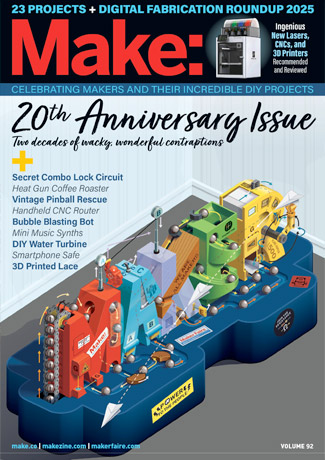
The announcement that industrial 3D printer company Stratasys has acquired the consumer-focused startup MakerBot has sent shockwaves through the maker world in the last 24 hours. This morning at MakerBot HQ in Brooklyn, NY, Bre Pettis and David Reis, principals in the two companies, gave a press conference to talk more about the deal, and what it means for the burgeoning 3D printing home market.
To start the event, Pettis looked back on the history of the scrappy company: “My first MakerBot was made of plumbing parts. And it didn’t work. It took a few years to get to where it could work. In January, 2009, we started MakerBot because we wanted to have a way to give everyone access to this technology. The first [printer] was an advanced DIY kit. If you made one, you’re a true maker.”
More important to the larger maker community, Pettis explained the reasons behind the acquisition, and how MakerBot would function moving forward: “Merging with Stratasys, becoming a public company, is an exciting new day for us. We will stay independent. MakerBot is MakerBot is MakerBot. We’re a special place, a really great place to come to work. We’re fearless. This merger is about supercharging our mission. We turn the volume from 11 to 12. We’ll have more resources to grow faster, stronger, and [we’ll have] more access to expertise and talent. [We can] can democratize this technology to let more people do more things.”
Stratasys CEO David Reis spoke to the question of why a major industrial firm like his chose to acquire a company like MakerBot, rather than building their own desktop solution in-house: “We’re not merging with just a printer; we’re merging with a brand, and a total ecosystem solution.”
A concern of late surrounding MakerBot’s move to a more closed printing platform has been users’ ability to own their designs on MakerBot’s design-sharing companion site, Thingiverse. When asked about this, Pettis responded that yes, users would continue to own their designs, and that Thingiverse (which had languished of late due to lack of resources), would see more attention and development.
[Thanks to Patrick DiJusto for his reporting.]
ADVERTISEMENT






